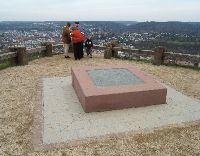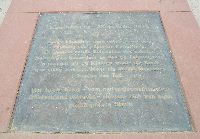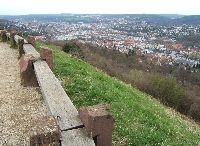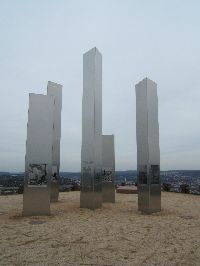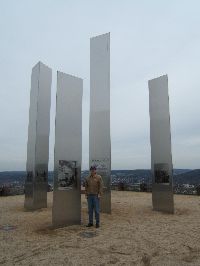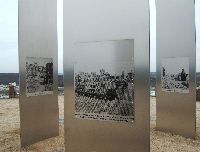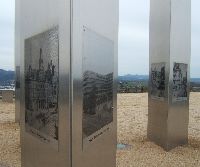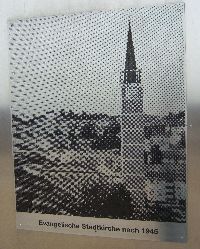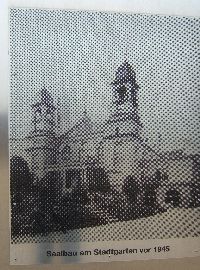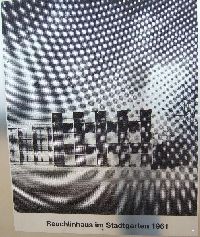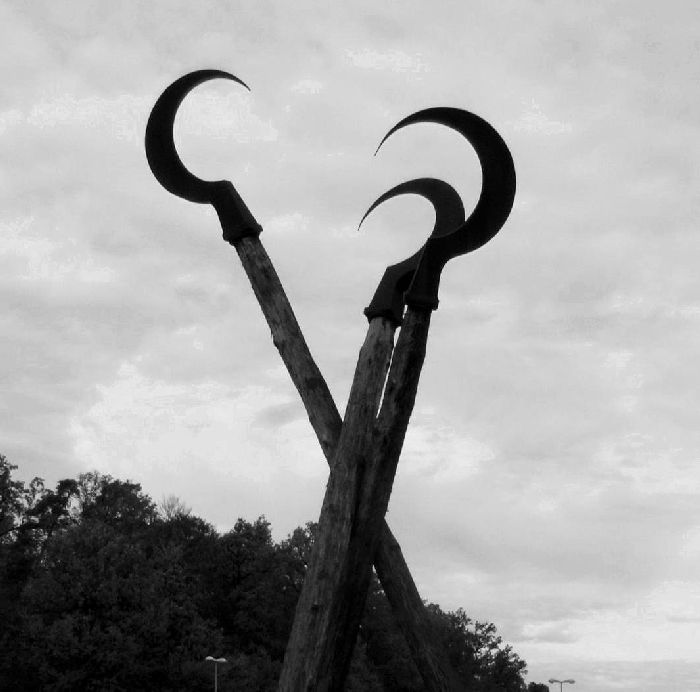Memorial to Bombing of City on Wallberg Rubble Hill in Pforzheim
Picture and text by Mark R. Hatlie
These pictures were taken on 15 April in Pforzheim, a city which lost over 60% of its constructed living space to allied bombing during World War Two. The marker is a hill that was made to a great extent out of the rubble of the town. It is not unlike the Birkenkopf rubble hill in Stuttgart.
One of the steles has information about the history of the memorial itself. It reads (German at bottom):
Natural hight of the hill: 378 meters
1952-1966: the creation of the Wallberg with approximately 1.65 million cubic meters of rubble up to a hight of 417.5 meters
1966-1967: landscaping of the top of the hill as a memorial to the air attack of 23 February, 1945.
February 1989: erection of a memorial plaque
February 2005: erection of the memorial
The British Dresden Trust, which supported the reconstruction of the Dresden Frauenkirche in remembrance of World War Two air attack victims in Europe, supports the erection of the memorial and writes, In humility before God we express our deep regret that by British acts of war on 23 February, 1945 so many people died and the old city of Pforzheim was completely erased. Just like the Dresden Frauenkirche these steles symbolize our strong and common will to honor all victims and to do everything within our power to create a more humane world. We join in warning and extend a hand of friendship. May we also come closer to each other with our hearts and be sure of God's blessing on our ever greater understanding."
The church bells of Coventry/England and Pforzheim ring every 14 November and 23 February on the days their cities were destroyed as a sign of reconciliation.
There follows a long list of contributors to the building of the memorial.
In the original German:
Natuerlich Hoehe des Bergs: 378 m
1952-1966: Aufschüttung dse wallbergs mit ca. 1,65 Millionen cbm Trümmern aund Bauschutt auf 417,5 m Höhe
1966-1967: Land-Art-Modellierung der Kuppe zum mahnenden Gedenken an den Luftangriff vom 23. Februar 1945
Februar 1989: Anbringung einer Gedenktafel
Februar 2005: Errichtung Mahnmal Wallbergs
Der britische Dresden-Trust, der den Wideraufbau der Dresdner Frauenkirche zum Gedächnis der Opfer der im Zweiten Weltkrieg in Europa stattgefundenen Luftangriffe fördert, unterstützt die Errichtung dieses Mahnmals und schreibt: "In Demut vor Gott druecken wir unser tiefstes Bedauern aus, dass durch britische Kriegshandlungen am 23. Februar 1945 so viele Menschen ums Leben kamen und das alte Pforzheim dabei voellig ausradiert wurde. Ebenso wie die Dresdner Frauenkirche symbolisieren diese Stelen unseren festen und gemeinsamen Willen, alle Opfer zu ehren und alles in unserer Kraft Stehende zu tun, um eine humanere Welt zu schaffen. Wir mahnen mit und entbieten die hand der Freundschaft. Moegen wir auch mit dem Herzen aufeinander zugehen uns Gottes segen zu immer besserer Verstaendigung gewiss sein."
Die Kirchenglocken in Conventry/England und Pforzheim laueten am 14. November und am 23. Februar jeden Jahres an den Tagen der jeweiligen Stadtzerstoerung als Zeichen der Versoehnung.




